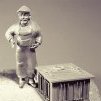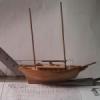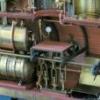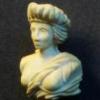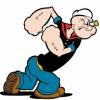Supplies of the Ship Modeler's Handbook are running out. Get your copy NOW before they are gone! Click on photo to order.
×
-
Posts
993 -
Joined
-
Last visited
Reputation Activity
-
 Wintergreen got a reaction from KeithAug in Altair 1931 by KeithAug - FINISHED - Scale 1:32 - schooner
Wintergreen got a reaction from KeithAug in Altair 1931 by KeithAug - FINISHED - Scale 1:32 - schooner
What John and Pat said.
Smashing!
-
 Wintergreen got a reaction from mtaylor in Altair 1931 by KeithAug - FINISHED - Scale 1:32 - schooner
Wintergreen got a reaction from mtaylor in Altair 1931 by KeithAug - FINISHED - Scale 1:32 - schooner
What John and Pat said.
Smashing!
-
 Wintergreen got a reaction from CiscoH in Kågen by Wintergreen - FINISHED - 1:30 - Swedish clinker-built cog work boat - SMALL
Wintergreen got a reaction from CiscoH in Kågen by Wintergreen - FINISHED - 1:30 - Swedish clinker-built cog work boat - SMALL
Thanks for the likes and comments. Always appreciated.
Vaddoc, I think you remember correct. Up here it is well known that all clinker built boats needs a good soaking before they float. That is also true for many carvel built ones. I had a skerry qruiser once, carvel built. First season I cared for her she float when launched much to the disappointment for all old salts that "knew" she would sink like a rock.
Second season I did not have the time to care for her and she sank like a crayfish cage...
About hull shape.
No, definitely not by eye only. The builder used moulds or templates as can be seen here.
And I mimic that with my crude basic structure. However, to get the shape shapely is another matter.
Let me show you.
Bow view. Looks okay. No major problems.
Stern view. The planks meet the stern timber with an exaggerated arc.
Viewed from below the lines look okay. (Aft to the left).
But viewed from aside the aft section of the planking can be seen to do an uneasy bend.
(Aft to the right)
This is why I already from the start stated that this was the practice run. Otherwise I would have a hard time accepting it. Right now it is "good enough". Hopefully I can counteract this on my second try.
Side information. Above the backing plates are easily noticed. I put it on a scale and it weighed a whopping 8 grams/0.28 oz... sneeze and you will launch into straight off the bench...
-

-
 Wintergreen reacted to Maury S in Anchor Hoy c. 1825 by Maury S - FINISHED - 1:48 - Harbor craft - POF
Wintergreen reacted to Maury S in Anchor Hoy c. 1825 by Maury S - FINISHED - 1:48 - Harbor craft - POF
The bowsprit is now rigged. I still need to add the top mast forestay. The blocks are rigged but not tied off so there is some slack that will disappear when finished.
Maury
-
 Wintergreen reacted to DocBlake in Battle Station by DocBlake - FINISHED - NRG
Wintergreen reacted to DocBlake in Battle Station by DocBlake - FINISHED - NRG
Finally done! Next up is a small case to protect the battle station
-
 Wintergreen reacted to EdT in Young America 1853 by EdT - FINISHED - extreme clipper
Wintergreen reacted to EdT in Young America 1853 by EdT - FINISHED - extreme clipper
Hakan, I took your good advice and put away the parts that were littering the deck. They will return later to be permanently fitted when the rigging permits.
Thanks,
Ed
-
 Wintergreen got a reaction from CiscoH in Kågen by Wintergreen - FINISHED - 1:30 - Swedish clinker-built cog work boat - SMALL
Wintergreen got a reaction from CiscoH in Kågen by Wintergreen - FINISHED - 1:30 - Swedish clinker-built cog work boat - SMALL
Okey, last post for the weekend.
Four strakes are on. As Vaddoc noted, they seemed to run high at the stem. Which I knew. This being learning by doing.
But, since wood is such a nice material to work with, things can be adjusted.
First picture. Before.
Second picture. After chisel and sandpaper.
I also have trouble amidships with the run of the planks dipping. No picture on that. Just a note to self.
Have a nice week!
-
 Wintergreen got a reaction from CiscoH in Kågen by Wintergreen - FINISHED - 1:30 - Swedish clinker-built cog work boat - SMALL
Wintergreen got a reaction from CiscoH in Kågen by Wintergreen - FINISHED - 1:30 - Swedish clinker-built cog work boat - SMALL
Thanks for checking in. Work progresses, albeit a bit slow.
Regarding the Viking long boats. I think the design worked in their favour. Both building rather big ships that sailed the North sea and Atlantic as well as their raids up on rivers in Russia and elsewhere.
Up river, when they came to a stream, they "just" hauled the boat out of the water and got some logs to roll it on until they'd got past the culprit. You don't do that with a 16th-17th square rigger...
Anyway, 5th strake is on. In the book, the 5th round is where he used three boards instead of two. I missed that and will cut the 6th strake in three pieces instead. Joggling the scarphs as I progress.
The shape is really hard to get right. The last couple of strakes are adjusted in-situ.
And a picture for reference..
To be continued...
-
 Wintergreen got a reaction from kees de mol in Kågen by Wintergreen - FINISHED - 1:30 - Swedish clinker-built cog work boat - SMALL
Wintergreen got a reaction from kees de mol in Kågen by Wintergreen - FINISHED - 1:30 - Swedish clinker-built cog work boat - SMALL
Thanks for checking in. Work progresses, albeit a bit slow.
Regarding the Viking long boats. I think the design worked in their favour. Both building rather big ships that sailed the North sea and Atlantic as well as their raids up on rivers in Russia and elsewhere.
Up river, when they came to a stream, they "just" hauled the boat out of the water and got some logs to roll it on until they'd got past the culprit. You don't do that with a 16th-17th square rigger...
Anyway, 5th strake is on. In the book, the 5th round is where he used three boards instead of two. I missed that and will cut the 6th strake in three pieces instead. Joggling the scarphs as I progress.
The shape is really hard to get right. The last couple of strakes are adjusted in-situ.
And a picture for reference..
To be continued...
-
 Wintergreen reacted to KeithAug in Altair 1931 by KeithAug - FINISHED - Scale 1:32 - schooner
Wintergreen reacted to KeithAug in Altair 1931 by KeithAug - FINISHED - Scale 1:32 - schooner
I had a good rummage through my cupboards and thankfully located the rudder and it’s shaft.
A few minutes later and it was fitted.
Direction re-established!!
-
 Wintergreen reacted to vaddoc in Kågen by Wintergreen - FINISHED - 1:30 - Swedish clinker-built cog work boat - SMALL
Wintergreen reacted to vaddoc in Kågen by Wintergreen - FINISHED - 1:30 - Swedish clinker-built cog work boat - SMALL
Very nice! I very much like the simplicity, just light colour planks on a dark colour spine. And a very wide beam! Does not look like a practice run really.
Regarding clinker planking, I think the main advantage is that the overlaps create longitudinal stringers that run the length of the boat adding great strength for weight. Regarding water tightness, I think I remember reading some paper that rated both carvel and clinker as poor. Adding longitudinal stringers internally over the joints of the planks in carvel faired a bit better but only the much more modern cold molded and stitch/plywood techniques were really waterproof.
-
 Wintergreen got a reaction from CiscoH in Kågen by Wintergreen - FINISHED - 1:30 - Swedish clinker-built cog work boat - SMALL
Wintergreen got a reaction from CiscoH in Kågen by Wintergreen - FINISHED - 1:30 - Swedish clinker-built cog work boat - SMALL
Hi guys,
the day is only half-gone here, but I just had to share this update with you.
First task for today was to clear a path to the shop... about 20cm/8" of snow overnight.
A short business trip took away a couple of days from the week, but back in the shop I made some progress.
Clinker/lapstrake is really something tricky to get right. Spiling and all that. In a later post I will show my trials and tribulations. On the trip I re-read H.A. Underhills chapter about clinker built boats, which was useful.
This far two full strakes are on. The scarphs are just plain butt ended with a backing piece on each. Joggled of course. Later each strake will be of three pieces.
Rubber bands and teak buns keep planks in place. I need to figure out some way to have the clamps not slipping off. Maybe a bit of tape will do the trick with enough friction.
Backing pieces have beveled edges for appearance. Should be pinned also, will see if I do that.
I am really enjoying this build. The result is far from perfect, but this is also my first time doing this. And since I have this first build as a practice run, my second will undoubtedly be better.
To be continued...
-
 Wintergreen got a reaction from cog in Kågen by Wintergreen - FINISHED - 1:30 - Swedish clinker-built cog work boat - SMALL
Wintergreen got a reaction from cog in Kågen by Wintergreen - FINISHED - 1:30 - Swedish clinker-built cog work boat - SMALL
Thanks for checking in. Work progresses, albeit a bit slow.
Regarding the Viking long boats. I think the design worked in their favour. Both building rather big ships that sailed the North sea and Atlantic as well as their raids up on rivers in Russia and elsewhere.
Up river, when they came to a stream, they "just" hauled the boat out of the water and got some logs to roll it on until they'd got past the culprit. You don't do that with a 16th-17th square rigger...
Anyway, 5th strake is on. In the book, the 5th round is where he used three boards instead of two. I missed that and will cut the 6th strake in three pieces instead. Joggling the scarphs as I progress.
The shape is really hard to get right. The last couple of strakes are adjusted in-situ.
And a picture for reference..
To be continued...
-
 Wintergreen got a reaction from Gahm in US Brig Syren by Gahm - Model Shipways
Wintergreen got a reaction from Gahm in US Brig Syren by Gahm - Model Shipways
Lovely detailing Thomas.
-
 Wintergreen got a reaction from archjofo in Kågen by Wintergreen - FINISHED - 1:30 - Swedish clinker-built cog work boat - SMALL
Wintergreen got a reaction from archjofo in Kågen by Wintergreen - FINISHED - 1:30 - Swedish clinker-built cog work boat - SMALL
Thanks for checking in. Work progresses, albeit a bit slow.
Regarding the Viking long boats. I think the design worked in their favour. Both building rather big ships that sailed the North sea and Atlantic as well as their raids up on rivers in Russia and elsewhere.
Up river, when they came to a stream, they "just" hauled the boat out of the water and got some logs to roll it on until they'd got past the culprit. You don't do that with a 16th-17th square rigger...
Anyway, 5th strake is on. In the book, the 5th round is where he used three boards instead of two. I missed that and will cut the 6th strake in three pieces instead. Joggling the scarphs as I progress.
The shape is really hard to get right. The last couple of strakes are adjusted in-situ.
And a picture for reference..
To be continued...
-
 Wintergreen got a reaction from CaptainSteve in Kågen by Wintergreen - FINISHED - 1:30 - Swedish clinker-built cog work boat - SMALL
Wintergreen got a reaction from CaptainSteve in Kågen by Wintergreen - FINISHED - 1:30 - Swedish clinker-built cog work boat - SMALL
Thanks for checking in. Work progresses, albeit a bit slow.
Regarding the Viking long boats. I think the design worked in their favour. Both building rather big ships that sailed the North sea and Atlantic as well as their raids up on rivers in Russia and elsewhere.
Up river, when they came to a stream, they "just" hauled the boat out of the water and got some logs to roll it on until they'd got past the culprit. You don't do that with a 16th-17th square rigger...
Anyway, 5th strake is on. In the book, the 5th round is where he used three boards instead of two. I missed that and will cut the 6th strake in three pieces instead. Joggling the scarphs as I progress.
The shape is really hard to get right. The last couple of strakes are adjusted in-situ.
And a picture for reference..
To be continued...
-
 Wintergreen got a reaction from Mike Y in Kågen by Wintergreen - FINISHED - 1:30 - Swedish clinker-built cog work boat - SMALL
Wintergreen got a reaction from Mike Y in Kågen by Wintergreen - FINISHED - 1:30 - Swedish clinker-built cog work boat - SMALL
Thanks for checking in. Work progresses, albeit a bit slow.
Regarding the Viking long boats. I think the design worked in their favour. Both building rather big ships that sailed the North sea and Atlantic as well as their raids up on rivers in Russia and elsewhere.
Up river, when they came to a stream, they "just" hauled the boat out of the water and got some logs to roll it on until they'd got past the culprit. You don't do that with a 16th-17th square rigger...
Anyway, 5th strake is on. In the book, the 5th round is where he used three boards instead of two. I missed that and will cut the 6th strake in three pieces instead. Joggling the scarphs as I progress.
The shape is really hard to get right. The last couple of strakes are adjusted in-situ.
And a picture for reference..
To be continued...
-
 Wintergreen got a reaction from reklein in Kågen by Wintergreen - FINISHED - 1:30 - Swedish clinker-built cog work boat - SMALL
Wintergreen got a reaction from reklein in Kågen by Wintergreen - FINISHED - 1:30 - Swedish clinker-built cog work boat - SMALL
Thanks for checking in. Work progresses, albeit a bit slow.
Regarding the Viking long boats. I think the design worked in their favour. Both building rather big ships that sailed the North sea and Atlantic as well as their raids up on rivers in Russia and elsewhere.
Up river, when they came to a stream, they "just" hauled the boat out of the water and got some logs to roll it on until they'd got past the culprit. You don't do that with a 16th-17th square rigger...
Anyway, 5th strake is on. In the book, the 5th round is where he used three boards instead of two. I missed that and will cut the 6th strake in three pieces instead. Joggling the scarphs as I progress.
The shape is really hard to get right. The last couple of strakes are adjusted in-situ.
And a picture for reference..
To be continued...
-
 Wintergreen got a reaction from popeye the sailor in Kågen by Wintergreen - FINISHED - 1:30 - Swedish clinker-built cog work boat - SMALL
Wintergreen got a reaction from popeye the sailor in Kågen by Wintergreen - FINISHED - 1:30 - Swedish clinker-built cog work boat - SMALL
Thanks for checking in. Work progresses, albeit a bit slow.
Regarding the Viking long boats. I think the design worked in their favour. Both building rather big ships that sailed the North sea and Atlantic as well as their raids up on rivers in Russia and elsewhere.
Up river, when they came to a stream, they "just" hauled the boat out of the water and got some logs to roll it on until they'd got past the culprit. You don't do that with a 16th-17th square rigger...
Anyway, 5th strake is on. In the book, the 5th round is where he used three boards instead of two. I missed that and will cut the 6th strake in three pieces instead. Joggling the scarphs as I progress.
The shape is really hard to get right. The last couple of strakes are adjusted in-situ.
And a picture for reference..
To be continued...
-
 Wintergreen reacted to SJSoane in HMS Bellona 1760 by SJSoane - Scale 1:64 - English 74-gun - as designed
Wintergreen reacted to SJSoane in HMS Bellona 1760 by SJSoane - Scale 1:64 - English 74-gun - as designed
Thank you, Gary, druxey and Håkan for your kind comments. It helps me keep going.
druxey, thank you for confirming that I should work on the port side top two strakes, before going back to the starboard lower two strakes. I want to trap the frame on both sides as close to the same time as possible, when the humidity is roughly the same. I worry about unequal pull on the two sides if one is restrained and the other is not when the humidity changes.
Last time, I fiddled with a variety of clamps at the bow. This time, I fashioned a wooden block that can be clamped against the bow by way of the back of the stem. It provides a good, clean, simple way of clamping. I need to take the time to make special clamps like this in the future; worth the extra time for a clean assembly process.
I also experimented with steaming and clamping the top plank on the port side directly to the hull, not to my former. The next day, the spring-back was so great that I steamed the piece again and clamped it in the former, now upside down, to make the piece symmetrical to the starboard piece. It now lays nicely against the hull.
Time to watch the Olympics!
Mark
-
 Wintergreen reacted to dvm27 in Speedwell 1752 by dvm27 (Greg Herbert) - FINISHED - Ketch Rigged Sloop
Wintergreen reacted to dvm27 in Speedwell 1752 by dvm27 (Greg Herbert) - FINISHED - Ketch Rigged Sloop
As many of my favorite modelers are posting updates this weekend I thought I'd share some recent progress on Speedwell. She is now sporting her copper cupola (say that three times quickly!) which arches over the steps to the "Great Cabin". I use that term in quotes because, after the lockers are installed, there is little room for the commanding Lieutenant. But this little vessel was designed for shore duty and was seldom used for sleeping. The cupola was shaped from a square of holly, hollowed out then spray painted with a hammered copper finish followed by matte varnish.
The rudderhead cover was also shaped from a holly plug which was then hollowed out. The panels were added to each side. Each one was a different dimension and all are hand fitted.
A little more work on the inside and outside of the hull and Speedwell, Volume I, will be off to the press!
-
 Wintergreen reacted to KeithAug in Altair 1931 by KeithAug - FINISHED - Scale 1:32 - schooner
Wintergreen reacted to KeithAug in Altair 1931 by KeithAug - FINISHED - Scale 1:32 - schooner
Pat, Dan, Tom and Bedford - thank you all for your supportive comments.
Today I was looking at the yacht thinking “that’s it” when I noticed the obvious omission.
Sometimes in life we lose the big picture in all that detail and end up rudderless.
I made the rudder in September 2016, now I just have to find it.
-
 Wintergreen reacted to EdT in Young America 1853 by EdT - FINISHED - extreme clipper
Wintergreen reacted to EdT in Young America 1853 by EdT - FINISHED - extreme clipper
Young America - extreme clipper 1853
Part 266 – Fore Lower Topsail Yard Continued
Apart from the braces that will be installed later, the last items of rigging on the lower topsail yards were the buntlines. There are two on each side. In the absence of sails these are stopped at the buntline blocks on top of the yard as shown in the first picture.
Buntlines are normally passed through blocks on the underside of the tops or crosstrees at the head of their associated mast, but with the addition of the second topsail yard, the lower topsail buntlines are rigged through double blocks seized to the forward topsail shrouds as shown. The starboard side is shown in the next picture.
From these double blocks the lines run down through fairlead holes in the top, inside the shrouds, through the fairleads on the #2 shrouds, and are belayed on the main pin rail on each side. These lines may be seen passing vertically down from the shroud blocks through the top in the next picture.
The lower ends of these lines may be seen belayed at the side in the next picture.
You may note that in these pictures the shroud lanyards have been re-wrapped above the deadeyes. These were unwound earlier to re-tension the shrouds and backstays as mentioned in an earlier post. The running rigging of the two lower yards has also been tensioned, secured at the pins with some dilute glue and the excess line clipped off. The clutter of these unsecured lines on the deck and above was becoming an unsightly nuisance, so it was time to get everything neatly secured. The next picture shows the forward deck cleared of excess rope.
One of the next steps will be to make and add rope coils at the belaying points. The lower yard tacks and lazy tacks are still only temporarily belayed until the sheets are rigged later.
Ed
-
 Wintergreen reacted to KeithAug in Altair 1931 by KeithAug - FINISHED - Scale 1:32 - schooner
Wintergreen reacted to KeithAug in Altair 1931 by KeithAug - FINISHED - Scale 1:32 - schooner
Haken, Pat, Richard, Mark. thank you all very much for your kind comments.
Michael, an interesting thought. The only photograph I have is one of the smaller dingy strapped to the deck. Here the straps seem to be of webbing. To carry off the leather idea the leather needs to be very thin and i know of a source as my wife is addicted to fine leather gloves. She is also apt to lose one every now and again so next time she does I may do the upgrade.
No boat progress this week although I have ripped out tiles, rebuilt walls, plumbed in sinks and radiators, and laid 140 sq ft of ceramic tiles. My daughter is pleased.





